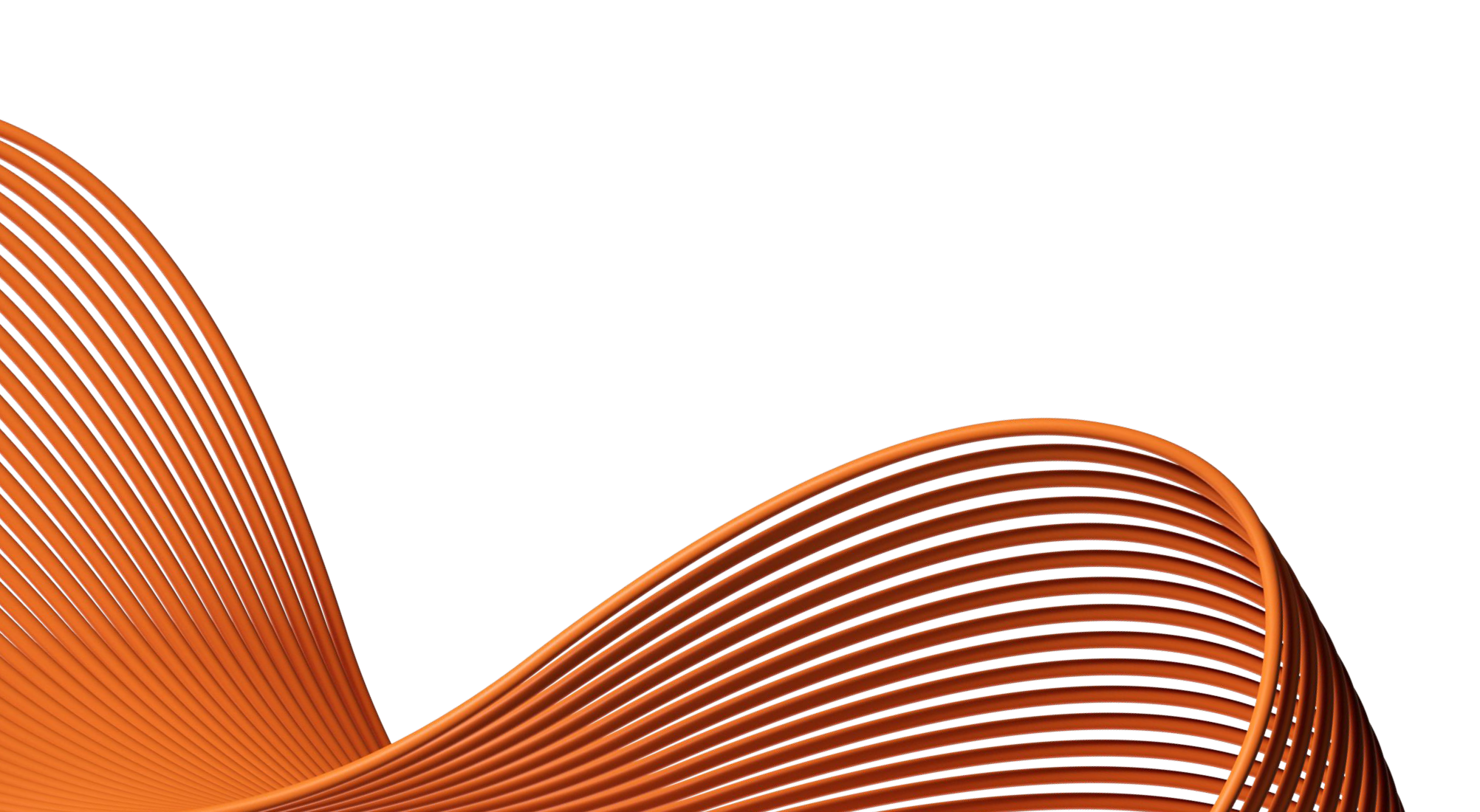- Our Products
- Upper Extremity
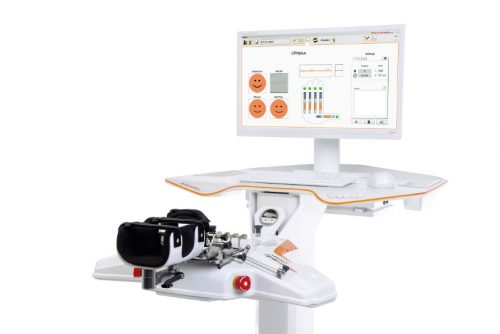 Amadeo Finger-Hand-Rehabilitation
Amadeo Finger-Hand-Rehabilitation
Amadeo is giving hands back their grip and fingers their finesse. Patients who are barely able or unable to grasp can perform hundreds of robot-assisted grasping movements. It won’t train a new Mozart. But it will help patients return to the piano, handwriting Christmas cards, and grabbing life firmly by the horns.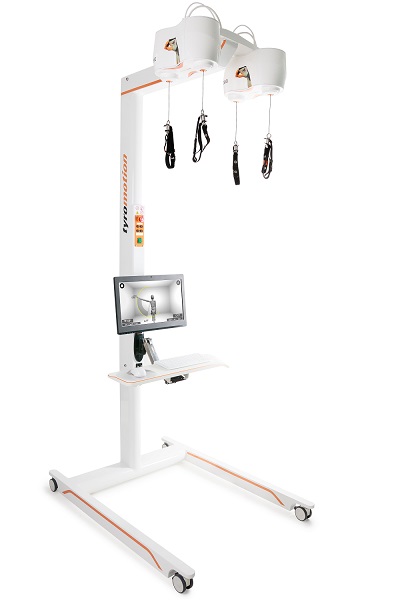 DiegoShoulder-Arm-Rehabiliation
DiegoShoulder-Arm-Rehabiliation
Diego is designed to strengthen what’s important. Whether proximal or distal training, Diego purposefully supports the rehabilitation of natural motion, allows the handling of everyday objects to be relearned, and is usable by adults and children alike.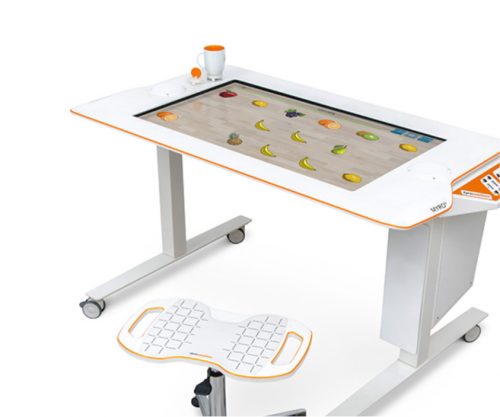 Myro Interactive and task-specific therapy
Myro Interactive and task-specific therapy
Myro is made for making humans get better! The sensor-based surface enables task-oriented rehabilitation with real objects, trains the patient’s cognitive abilities, and improves motor abilities of the upper extremity.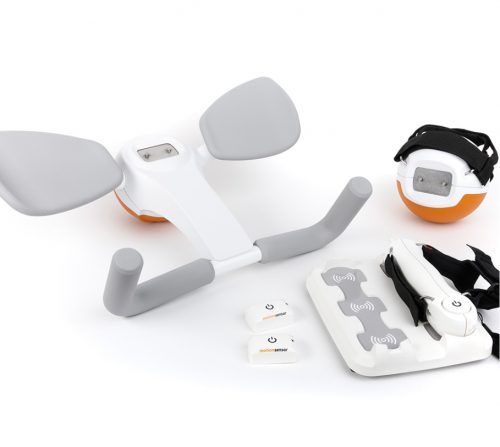 Pablo Upper Extremity Rehabilitation
Pablo Upper Extremity Rehabilitation
As a multifunctional rehabilitation device with comprehensive accessories, Pablo enhances classical therapy exercises with biofeedback, objective assessments, and gamification. It won´t train the next Picasso. But it will help patients to take back control of their lives.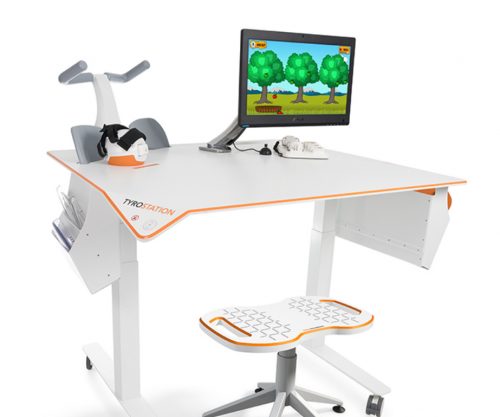 Tyrostation The perfect therapy setting
Tyrostation The perfect therapy setting
The Tyrostation is home to all components of Pablo and Tymo and provides ergonomic adaptability for patients. Sometimes, it´s about the little things in life – or therapy.
- Lower Extremity
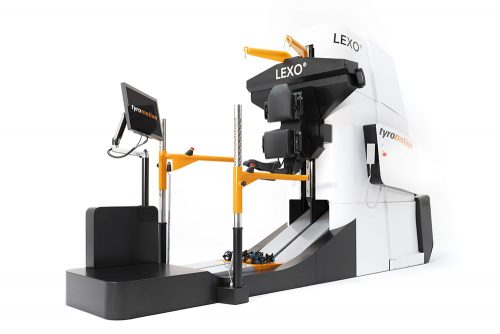 LexoGait and Locomotion
LexoGait and Locomotion
Lexo is a revolutionary gait trainer and impresses with fast setup, high patient activity and optimal trunk support. It encourages active participation and enables therapists to focus fully on their patients.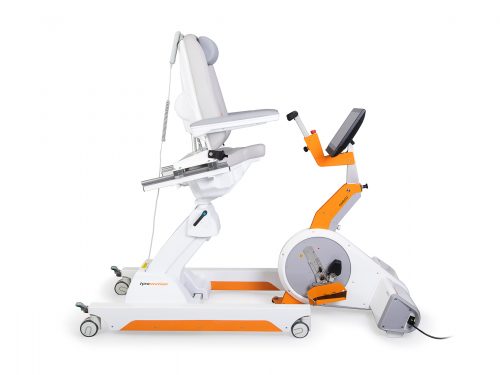 Omego Plus Gait training for the goals across all phases
Omego Plus Gait training for the goals across all phases
More than just a therapy bike! Omego Plus combines uni- and bilateral leg training, leg press, stepper, cycling & foot lift training in one device. Stride stronger with Omego Plus!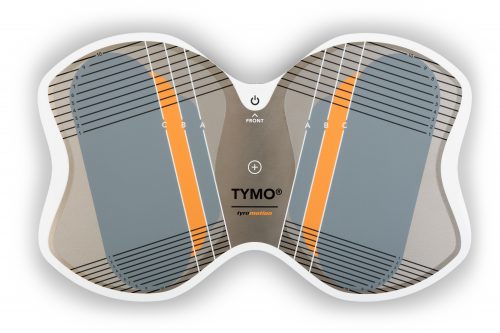 Tymo Balance training and postural control
Tymo Balance training and postural control
Small but powerful! Tymo is a versatile measurement and therapy system for the whole body. In addition to the standing position, Tymo offers a wide range of options for maximum variety during therapy.
- MTT-Line
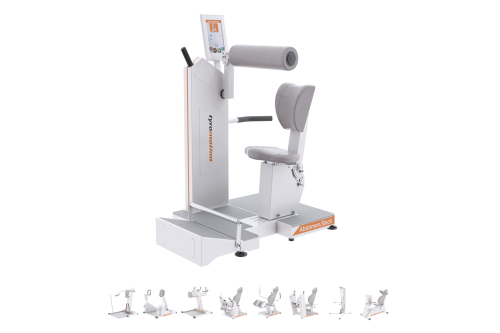 MTT-LineMedical training therapy
MTT-LineMedical training therapy
Get back in the game with the MTT-Line! The Medical Training Therapy devices are specifically designed to strengthen the six major muscle groups of the human body. Barrier free and maximum adjustability make the devices accessible for all types of patients.
- Software
 Maya Therapy Platform
Maya Therapy Platform
Maya reduces paperwork, standardizes documentation, and automates reporting, making administration effortless and efficient. Designed for therapists to work wonders!
- Upper Extremity
Rehabilitation in Pandemics is an integral component of a comprehensive management
In some cases, the pandemic led to a reduction of rehabilitation services due to cancellation of elective surgeries, reallocation of resources to critical items such as personal protective equipment and intensive care unit equipment, as well as the redistribution of staff.
However, patients recovering from COVID-19 need rehabilitation and many facilities are now seeing an increased demand for services. Providers are challenged to satisfy the rehabilitation needs for large numbers of patients while ensuring high standards of care, maintaining social distancing and other restrictions.
Massive Drop in Stroke Evaluations
A study titled Collateral Effects of COVID-19 on Stroke, published May 8, 2020 in the New England Journal of Medicine, showed that the number of people evaluated for acute stroke in the U.S. has dropped by 39% during COVID-19.1
This health emergency and the resulting adaptation of healthcare facilities has also influenced the rehabilitation treatments of non-COVID-19 pathologies. Early rehabilitation is strongly correlated with optimal clinical and functional recovery and the delay of post-stroke rehabilitation is related to poor functional recovery.1
During a pandemic, immediate care for people who experience a stroke is of critical importance to allow access to treatments and effectively reduce death and disability.
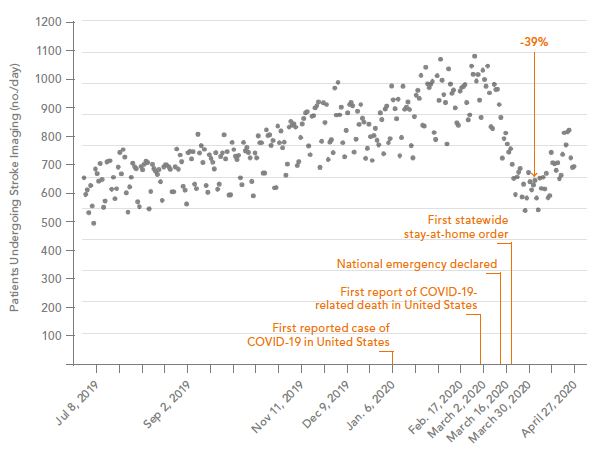
Stroke in COVID-19 Patients under 50
Five cases of large-vessel stroke in patients younger than 50 years were reported from New York in the New England Journal of Medicine. All five patients tested positive for Covid-19. Two of the patients delayed calling an ambulance because they were concerned about going to a hospital during the pandemic.2
Awareness seems advisable that social distancing, isolation, and reluctance to present to the hospital may contribute to poor outcomes after stroke.
Post Intensive Care Syndrome (PICS)
There are grounds for concern that a significant number of people will emerge from intensive care with Post Intensive Care Syndrome (PICS) and that being on a ventilator battling through COVID-19 in intensive care for more than a week may result in disability.3
During a stay in the intensive care unit (ICU) the most common form of physical impairment acquired is neuromuscular weakness, with more than 25% of individuals having poor mobility, recurrent falls, or paresis.4
A study in survivors of severe critical illness shows that early physical and occupational therapy during critical illness are the best evidence-based target interventions for reducing the long-term physical complications.4
Recent experience from Italy already reveals that especially patients with serious COVID-19 illness need a tailored neuromotor and respiratory rehabilitation program.5
“Early rehabilitation of the COVID-19
patients can enhance pulmonary,
respiratory function, reduce complications,
improve function, cognitive impairments
and quality of life.” 6
Optimizing outcomes
Rehabilitation may reduce complications associated with admission to an ICU, such as post intensive care syndrome (PICS); it aims to optimize a patient’s recovery and reduce the extent of disability. Rehabilitation interventions can help to address many consequences of severe COVID-19, including physical, cognitive, and swallowing impairments, and provide psychosocial support. Older patients, and those with pre-existing health conditions, may be more vulnerable to the effects of severe illness, and rehabilitation can be particularly beneficial for maintaining their prior levels of independence.6
Rehabilitation improves the health outcomes of patients with severe cases of COVID-19 and benefits health services through.7
By using powerful novel technologies in rehabilitation such as robotics, sensor technology, virtual reality and gamification, Tyromotion makes it possible to guide patients through the rehabilitation process with more motivation, increased intensity and dosage of therapies.
Rehabilitation technology and robotics can help with individually tailored and highly intensive therapy as well as with providing therapy to more patients.8,9
“As in any disaster, the role of
medical rehabilitation in pandemics
is an integral component of
comprehensive management.”6
OMEGO Plus may help with rehab during COVID-19 by sup-porting early rehabilitation & a comprehensive therapy pro-gram within one device.
- Reduce number of times a patient moves between diffe-rent devices.
- OMEGO Plus addresses endurance, strength and coordi-nation all in one device.
- Disinfection once per session and not after every device.
- Software guided goal-oriented therapy sequences can reduce the number of physical interactions between pa-tients and therapists.
- Multiple OMEGO’s can be safely spaced apart and allow the treatment of several patients at once by a single therapist. This facilitates continuous indirect supervision of all patients with minimal direct contact.
|
|
This is why we believe OMEGO Plus can help on the pathway to recovery during a pandemic. |
References
1 Kansagra AP, Goyal MS, Hamilton S, Albers GW. Collateral Effect of Covid-19 on Stroke Evaluation in the United States. N Engl J Med. 2020 May 8.
2 Oxley TJ, Mocco J, Majidi S, et al. COVID-19 Cases. Large-Vessel Stroke as a Presenting Feature of Covid-19 in the Young. N Eng J Med. 2020 May 13.
3 https://www.rehabpub.com/conditions/fear-of-post-intensive-care-syndrome/? campaign_type=newsletter
4 Fan E, Dowdy DW, Colantouni E, et al. Physical Complications in Acute Lung Injury Survivors: A 2-Year Longitudinal Prospective Study. Crit Care Med. 2014;42(4):849–859.
5 Brugliera L, Spina A, Paola Castellazzi P, et al. Department of Rehabilitation and Functional Recovery, I.R.C.C.S. San Raffaele Scientific Institute, Vita-Salute University, Milan. Rehabilitation of COVID-19 patients. J Rehabil Med 2020; 52:4.
6 Khan F, Amatya B. Medical Rehabilitation in Pandemics: Towards a new perspective. J Rehabil Med. 2020 Apr 9.
7 Pan American Health Organization (PAHO). Rehabilitation considerations during the COVID-19 outbreak. 2020.
8 Aprile I, Germanotta M, Cruciani A, Loreti S, Pecchioli C, Cecchi F, Montesano A, Galeri S, Diverio M, Falsini C, Speranza G, Langone E, Papadopoulou D, Padua L, Carozza M. Upper Limb Robotic Rehabilitation after Stroke: A Multicenter, Randomized Clinical Trial. J Neurol Phys Ther. 2020 Jan; 44(1): 3-14.
9 Calabrò RS, Accorinti M, Porcari B, Carioti L, Ciatto L, Billeri L, Andronaco VA, Galletti F, Filoni S, Naro A. Does hand robotic rehabilitation improve motor function by rebalancing interhemispheric connectivity after chronic stroke? Encouraging data from a randomised-clinical-trial. Clin Neurophysiol. 2019 May; 130(5):767-780.



 Contact
Contact 
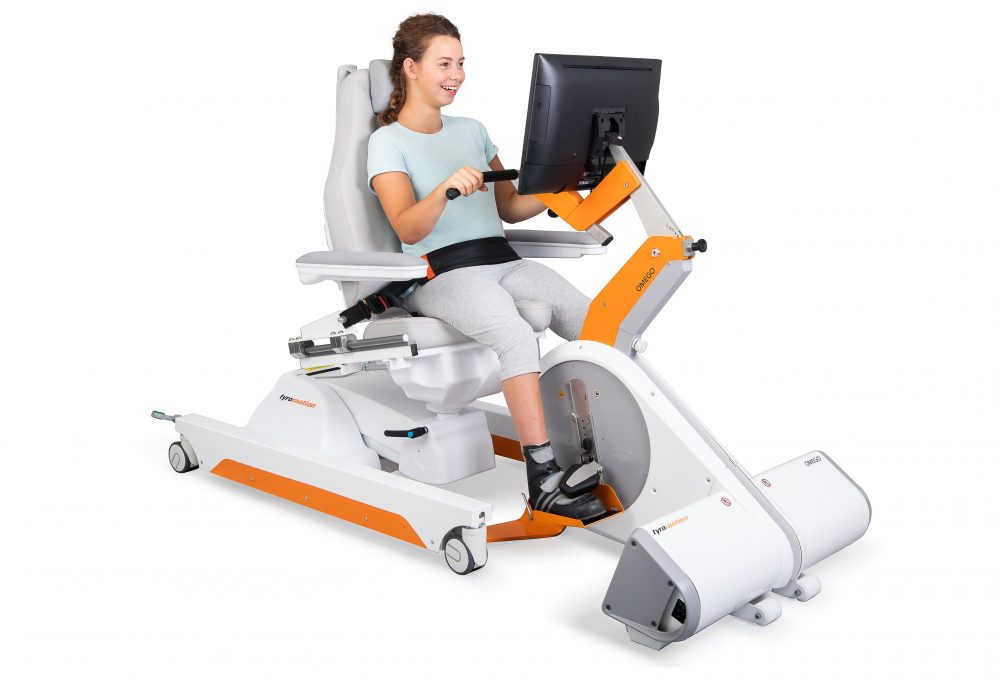

 Contact
Contact 